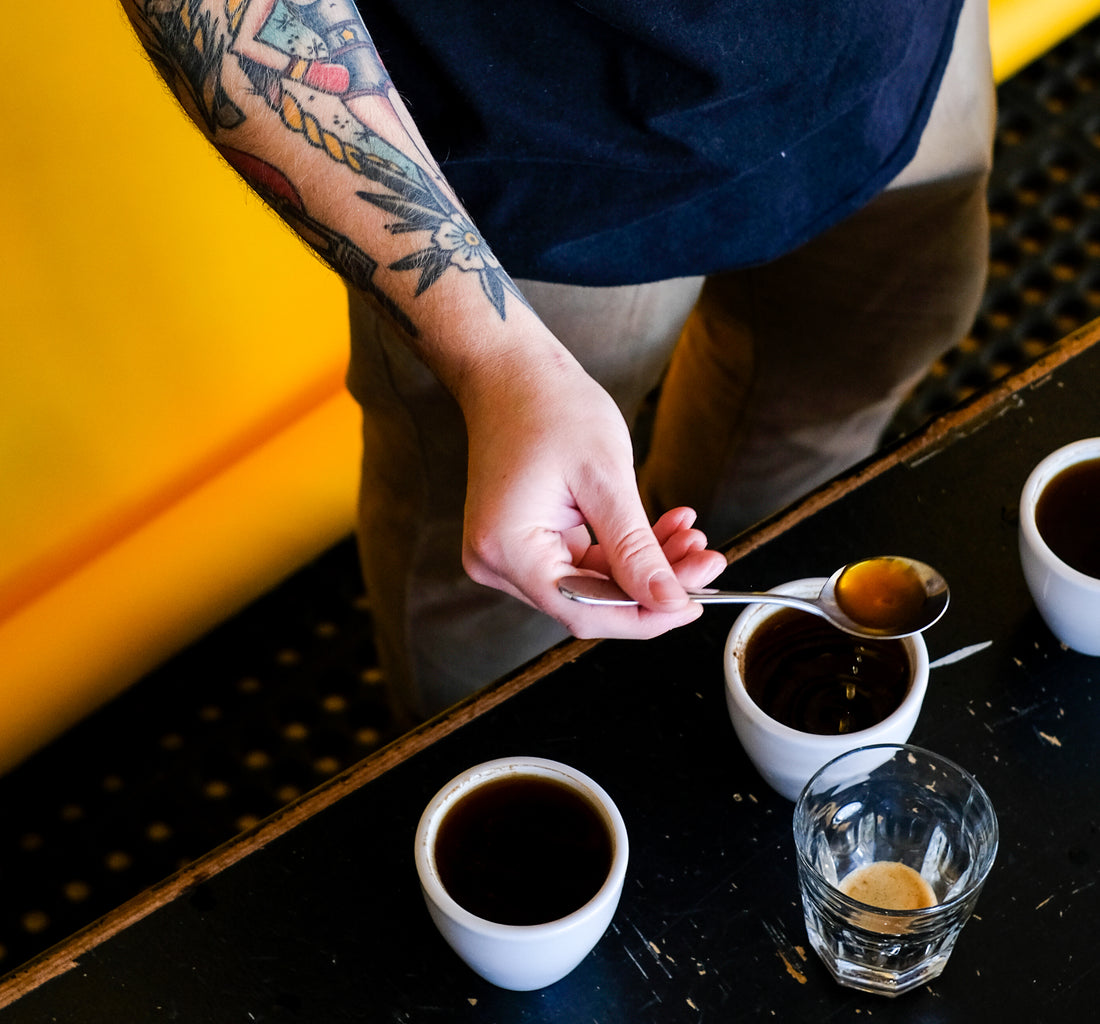
Coffee Tasting 101
Share
By Logan Mulholland
Back in the day coffee was weak, strong, bold, or smooth. You didn’t need to articulate much more than that in order to find a coffee that suited your personal preference.
Things have definitely gotten more advanced as the specialty coffee industry has permeated just about every corner of the country. While a lot of the vernacular may seem overly complicated or superfluous, understanding and appreciating the finer nuances of a particular coffee is a rewarding experience that will prove fruitful in your continued coffee journey.

At Populace, we utilize these tasting techniques in many different parts of the supply chain. We choose particular coffees based on their flavor profiles to satisfy certain requirements for our blends, we cup coffees to assess and evaluate our roast profiles, and we taste for quality and consistency in our cafes.

Initially, you will assess the coffee's aroma. The dry aroma is what you smell immediately after grinding it and the wet aroma is what you smell immediately after you’ve introduced water to the coffee. It is always interesting to notice the way the aroma changes once the coffee begins to react with the water.

Once your coffee has finished brewing, you will begin to taste it! The first thing we take note of is the body. This is probably the first thing many coffee drinkers notice when drinking a coffee for the first time. Is the body light or heavy? Silky or smooth? This is what people are noticing when they determine a coffee is “bold”. The body can be affected by the varietal, country of origin, or roast level.

Next we focus on the acidity. Acidity is one of the most exciting parts of tasting coffee, as it is where most of the interesting and dynamic flavors come from. If you’ve ever been blown away because your coffee tastes like lemon or raspberries, you’ve got acidity to thank for that! A trick for picking out certain acids is to focus on what you are tasting on the sides of your tongue. A general rule of thumb is as the elevation a coffee is grown at increases, the acidity also increases.

Lastly, you’ll think about the sweetness. Coffee that is properly roasted and brewed should have lots of sweetness to compliment the acidity. We often pick up notes of sweetness similar to cane sugar or milk chocolate.

